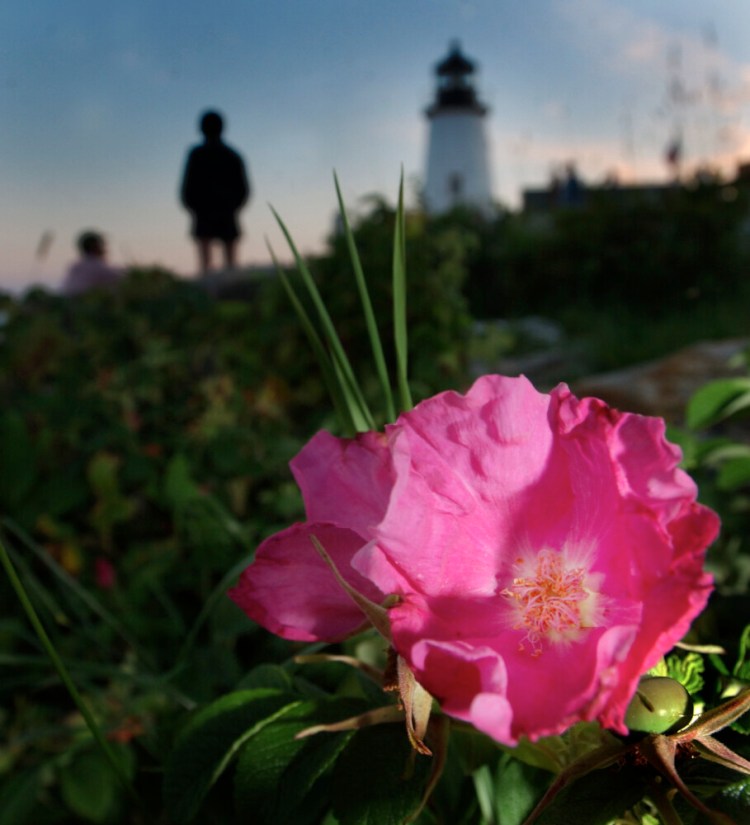The list of 33 invasive plants that it is illegal to sell in or import to Maine will be expanded sometime next year.
The legislation creating the original list in 2017 also required the state Department of Agriculture, Conservation and Forestry to create a committee that would update the list after five years. That committee, made up of stakeholders like horticulturists and foresters, has already met several times.
Gary Fish, state horticulturist and a member of the committee, said he expects the list won’t be finished before the end of this year or early next year. Fish coordinated the effort to create the original list of 33 banned plants when he was director of the Board of Pesticides Control. He said an additional 81 plants are definitely being considered for inclusion on the list this year and another 30 or so might also be considered.
The plants under consideration come from several different sources, he said. A prime source is an advisory list of invasive plants created in 2019 by the Maine Natural Areas Program, which you can find here.
That list includes about 125 plants, including the 33 that were previously banned.
Some consideration will be given to plants that are invasive in warmer states to the south of Maine that could become invasive here, too, as Maine warms because of climate change, Fish said. The committee will also consult lists from nearby states. Also, anybody can use a form on the department website to suggest plants they think should be banned for sale. Find that list here.

A thicket of Japanese knotweed. The invasive plant grows so densely, it shades out and crowds native species, which are critical for feeding and sheltering wildlife. Maine Department of Agriculture, Conservation and Forestry
Why, people who aren’t regular readers of this column, might wonder, are we banning plants? Japanese knotweed, for instance, on the original list of 33 banned plants, has some good points: Foragers like to eat the new shoots in spring, and honeybees love the flowers.
The answer is that the good points are far outweighed by the bad. Japanese knotweed spreads by seed, by roots spreading underground and by any cut part of the plant rooting in the soil, making the plant pretty much impossible to eradicate (easy to see for yourself if you walk around your neighborhood – it’s EVERYWHERE). Although burning bush, or winged euonymus, is on the original list of 33, it still grows in many Maine gardens. The law bans its sale and import but doesn’t require people to remove bushes they already have in their garden. I understand the appeal of burning bush: it is a low-maintenance plant with wonderfully bright fall foliage. Unfortunately, it also seeds heavily, and those seeds are spread by wildlife.
The problem with these two plants, as well the other 31 on the list, is that they outcompete native species, both because of their overall aggressiveness and because they have no natural enemies in Maine. The native species that these invasives overrun are needed to feed and shelter our native insects, birds and other wildlife, many of which have co-evolved over thousands of years to eat or otherwise use particular native plants. The non-natives often are less nutritious for native wildlife.
Some of the plants on the Maine Natural Areas Program list are still popular with growers, nurseries and many Maine gardeners. Consider Rugosa rose, the beach rose that grows all along the coast. The state rates it as “very invasive,” one step below the worst rating, “severely invasive.” And, no matter what you think, no matter how much you identify these roses with Maine’s beautiful coast, rugosa roses are not native to the state; they originate in Northeastern Asia, including parts of Japan and Russia. They first arrived in Europe in the 1790s — imported for gardens, as an easy-care rose is always in demand — but weren’t common there or in America until the middle of the 19th century.
Another example is the callery pear; its prime cultivar is the Bradford pear. Introduced to Maine from China and Vietnam in the 1960s, the tree is dominant in landscapes, especially south of us: you can recognize it in spring by its many beautiful white flowers. It was thought to be sterile, and, true, it won’t pollinate with other callery pears, but it will pollinate with other pear varieties, producing many unwanted seedlings in the wild.
In addition to Fish, the nine-member stakeholder committee includes three people from the ornamental horticulture industry, a forester, a land trust member, an extension educator and a city arborist. The committee has final say over what plants are put on the list. “We are looking for a full consensus,” Fish said, meaning that any serious opposition to a plant going on the list will likely succeed.
He hesitated to make predictions, but he guessed that rugosa roses, beloved of many Mainers, will probably not be added to the list, but the callery pear may be.
Tom Atwell is a freelance writer gardening in Cape Elizabeth. He can be contacted at: tomatwell@me.com.
Send questions/comments to the editors.



Success. Please wait for the page to reload. If the page does not reload within 5 seconds, please refresh the page.
Enter your email and password to access comments.
Hi, to comment on stories you must . This profile is in addition to your subscription and website login.
Already have a commenting profile? .
Invalid username/password.
Please check your email to confirm and complete your registration.
Only subscribers are eligible to post comments. Please subscribe or login first for digital access. Here’s why.
Use the form below to reset your password. When you've submitted your account email, we will send an email with a reset code.